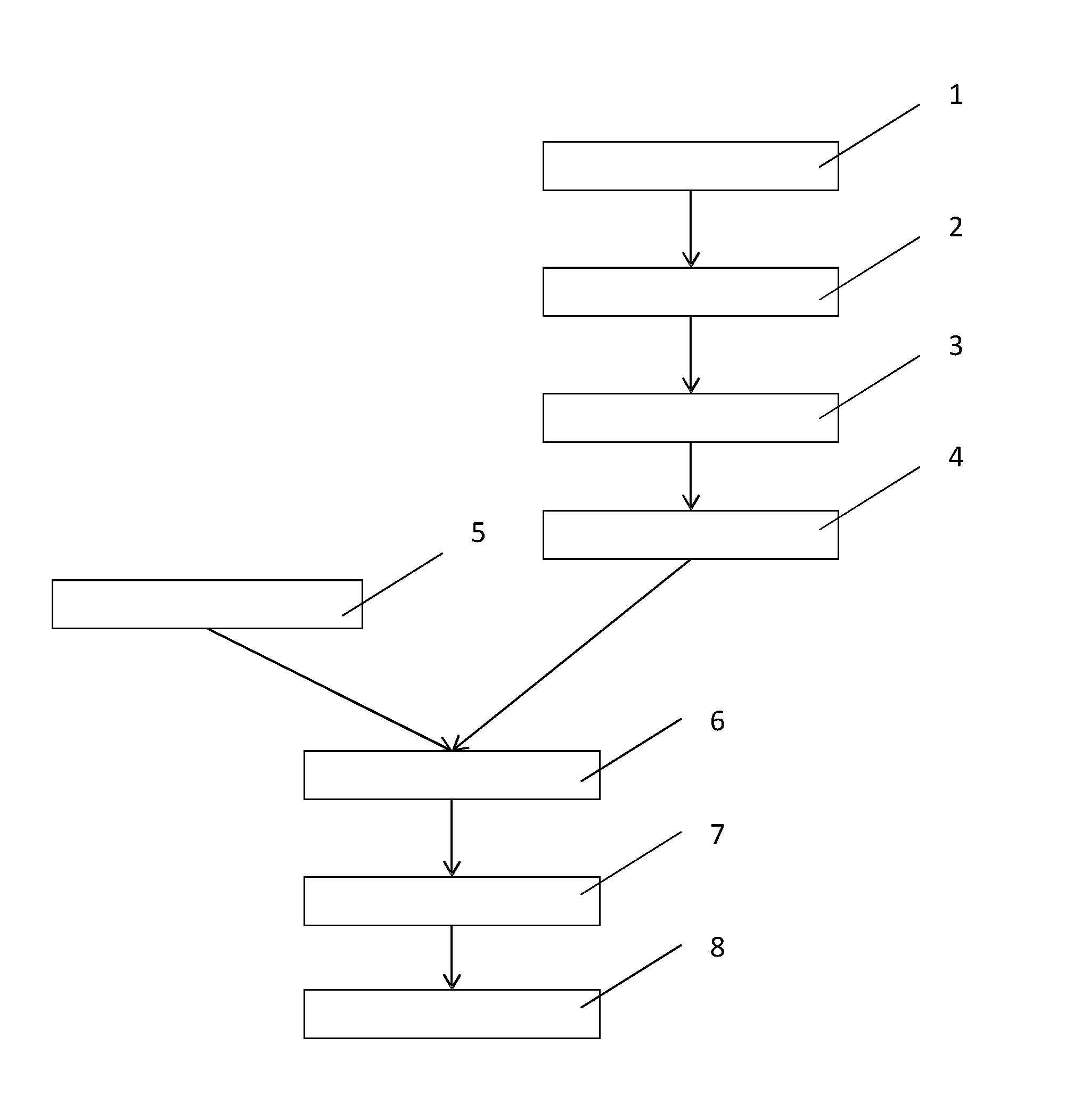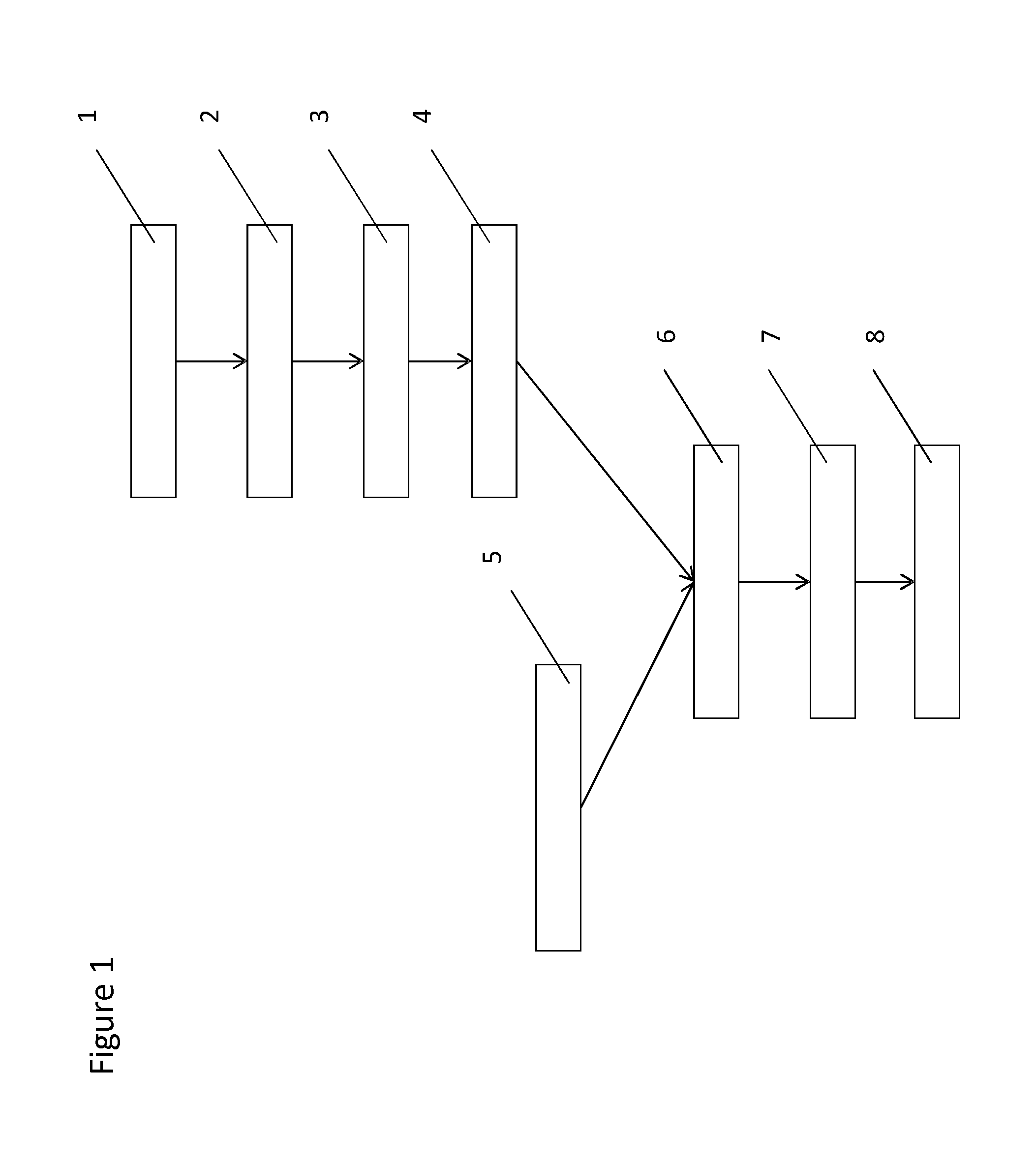Method for determining the distribution of an imaging agent
a technology of imaging agent and distribution method, which is applied in the field of imaging agent distribution measurement, can solve the problems of inhomogeneous uptake, slow uptake, and inability to accurately represent the uptake, so as to improve the accuracy of the method, improve the accuracy, and reduce the complexity of the imaging system
- Summary
- Abstract
- Description
- Claims
- Application Information
AI Technical Summary
Benefits of technology
Problems solved by technology
Method used
Image
Examples
first embodiment
[0038]In the invention the imaging agent activity in a compartment is represented by a single non-affine transformation of the template imaging agent activity as determined from a functional image of the volume. Thus taking for example Equation 2 above, the activity resulting from the imaging agent distribution basis function in the first compartment (n=1) can be represented by the matrix:
B1,1(x,y,z)=k1,1·(C(x,y,z)*S1(x,y,z))2 Equation 4
for the exemplary case where the non-affine activity transformation of a square power law is used and k1,1 is a scaling factor associated with compartment 1 and the imaging agent distribution basis function 1.
second embodiment
[0039]In the invention the imaging agent activity in a compartment is represented by the combination of a non-affine transformation and an affine transformation of the template imaging agent activity as determined from a functional image of the volume. Thus taking for example Equation 2 above, the activity resulting from the imaging agent distribution in the first compartment (n=1) may be represented by the matrix:
T1=k1,1·(C(x,y,z)*S1(x,y,z))2+k1,2·(C(x,y,z)*S1(x,y,z))+k1,3*S1(x,y,z) Equation 5
for the exemplary case where the non-affine activity transformation of a square power law is used and wherein k1,1, k1,2, k1,3 are scaling factors associated with compartment 1. The scaling factors in either embodiment may be adjusted independently in order to improve the correspondence between the calculated projected imaging agent activity and the intensity of the acquired planar image or scintigraphy. This second embodiment is well suited to fitting to the planar image when a locally high ...
PUM
 Login to View More
Login to View More Abstract
Description
Claims
Application Information
 Login to View More
Login to View More - R&D
- Intellectual Property
- Life Sciences
- Materials
- Tech Scout
- Unparalleled Data Quality
- Higher Quality Content
- 60% Fewer Hallucinations
Browse by: Latest US Patents, China's latest patents, Technical Efficacy Thesaurus, Application Domain, Technology Topic, Popular Technical Reports.
© 2025 PatSnap. All rights reserved.Legal|Privacy policy|Modern Slavery Act Transparency Statement|Sitemap|About US| Contact US: help@patsnap.com



